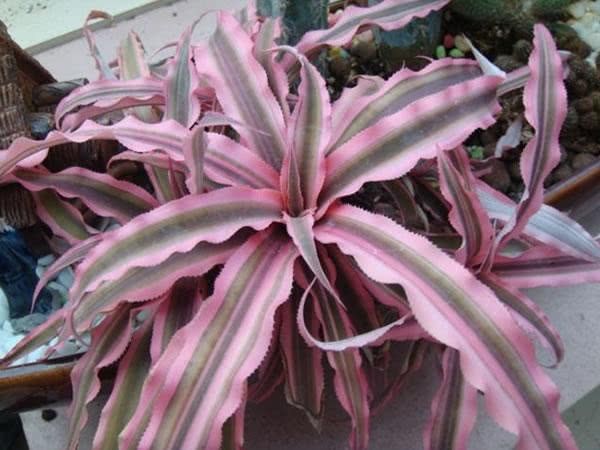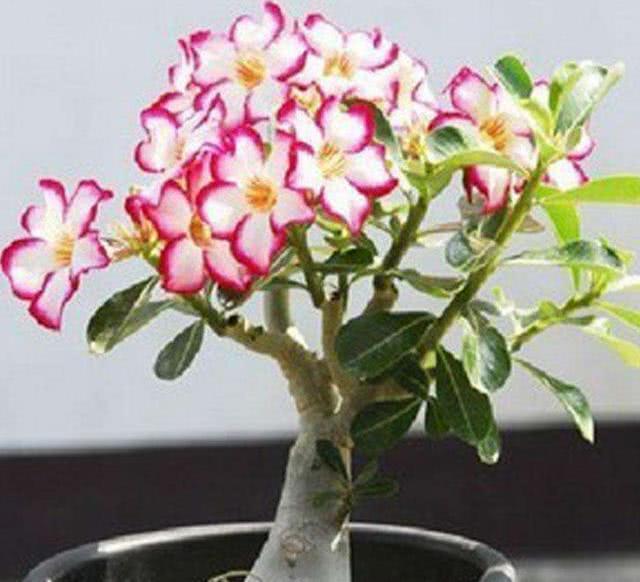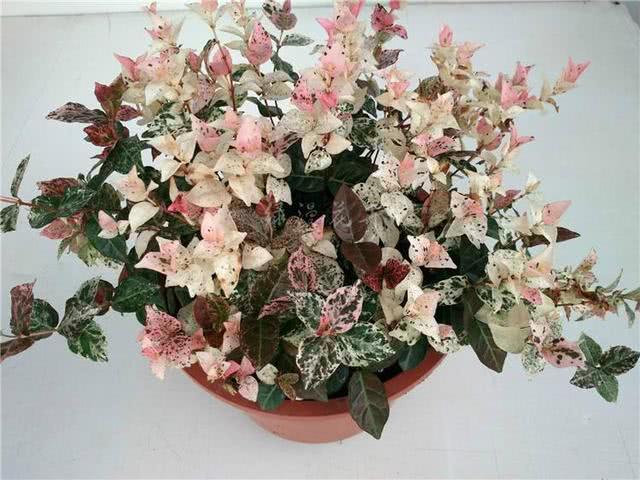How to cultivate tropical exclusive bonsai Ji pineapple it is very important to cultivate fertilized soil.

Ji pineapple, also known as Zijin pineapple, is mainly produced in tropical areas, such as the southern capital of Brazil, and its rhizomes on the ground are almost negligible, so the open part of the plant is usually composed of dozens of leaves of similar size. the leaves are mostly brown and green, and the potted Ji pineapple is a small plant, so its petite figure is also very suitable for ornamental use. It is a good choice for living room decoration and bedroom decoration.
First, the cultivation of Ji pineapple
Generally speaking, the cultivation of Ji pineapple can be propagated by sowing or cutting. because its seeds are difficult to obtain, it usually needs artificial methods to get the seeds of Ji pineapple. Therefore, potted Ji pineapple usually chooses cutting to plant. Unlike the branches selected by most plant cuttings, Ji pineapple cuttings use tiller buds cutting. the specific method is to cut off leaves with tiller buds about 10 cm in length in the rhizome of the plant. then disinfect the wound of the leaf to prevent it from being infected by bacteria, and then cut it into the soil after the wound heals. Pour in the right amount of water, wait one to two months, the pot can see the emergence of new roots, then put the pot in the appropriate place for growth, and then carry out normal management.
II. Conservation of Ji pineapple
1. Soil requirement
Ji pineapple has lower requirements for soil, if the family pot culture, it is best to choose a more fertile soil, this is more fertile soil is more beneficial to plant growth, the poorer soil usually makes the growth of Ji pineapple slower, but no matter which kind of basin soil is chosen, it is necessary to ensure that the soil permeability is good. In addition, qualified friends had better add garden soil, river sand, humus soil, etc., the comprehensive ability of mixed soil is also better than a single soil, and the probability of basin soil problems will be greatly reduced.
two。 Lighting requirement
Light is particularly important for the growth of Ji pineapple, which directly affects the growth of leaves, the shape of plants and the luster of flowers. In general, Ji pineapple can grow in full sunshine, such as the spring and autumn season, keeping about 10 hours of light every day, which is very beneficial to the growth of Ji pineapple; but the light can not be too strong, when summer comes, potted pineapple growth in the sun need to do a good shade measures, otherwise the plant is easy to be burned by the sun.
3. Water condition
Water is also very important for Ji pineapple. Water applied to potted plants should not be irrigated directly with tap water, but should be placed for two to three days before adding. On the other hand, because Ji pineapple is very afraid of stagnant water, it should not be watered too fast, usually every three days or so, and the amount of water should be increased appropriately from early summer to early autumn. during this period, it is best to water every morning, which is most beneficial to the growth of Ji pineapple.
4. Fertilization requirements
Like most plants, compound organic fertilizer should be chosen as the fertilizer of Ji pineapple, whether nitrogen fertilizer or phosphorus and potassium fertilizer should be evenly applied in the basin soil. in general, nitrogen fertilizer can be slightly more, so it can promote the growth of leaves and roots.
Ji pineapple in the seedling stage should not apply too much fertilizer, generally only once every half a month to about a month. When the plant develops to a certain stage, for example, when the length of the leaf is more than 8 cm, the amount of fertilizer can be gradually increased. However, the principle of "frequent application of thin fertilizer" should be maintained, and fertilization can be stopped before the plant florescence.
- Prev

Understanding the growth habits of desert roses pay attention to these points can make the beautiful flowers bloom
Desert rose plant is short, tree-shaped simple and vigorous, the rhizome is as fat as a wine bottle, the flower is shaped like a trumpet when the flower is blooming, and the flower is bright red, which is very suitable for indoor culture and ornamental. Its origin is close to the desert in Africa, and the flowers are as red as roses.
- Next

The mosaic collaterals are really good-looking, the leaves are diverse, eye-catching, good resistance, good bonsai is also good.
Huaye Luoshi, also known as White Sweet Flower, is one of the most widely used flowers in gardens and other aspects of greening in Japan. Its color ranges from white to red to pink. Groups of Flower and Leaf Stones attract people's attention in terms of appreciation.
Related
- Wuhan Hospital Iron Tree Blooming Result Was Instantly Frightened by the Gardener Master
- Which variety of camellia is the most fragrant and best? Which one do you like best?
- What is the small blue coat, the breeding methods and matters needing attention of the succulent plant
- Dormancy time and maintenance management of succulent plants during dormancy
- Minas succulent how to raise, Minas succulent plant pictures
- What are the varieties of winter succulent plants
- How to raise succulent plants in twelve rolls? let's take a look at some experience of breeding twelve rolls.
- Attention should be paid to water control for succulent plants during dormant period (winter and summer)
- Watering experience of twelve rolls of succulent plants
- Techniques for fertilizing succulent plants. An article will let you know how to fertilize succulent plants.

